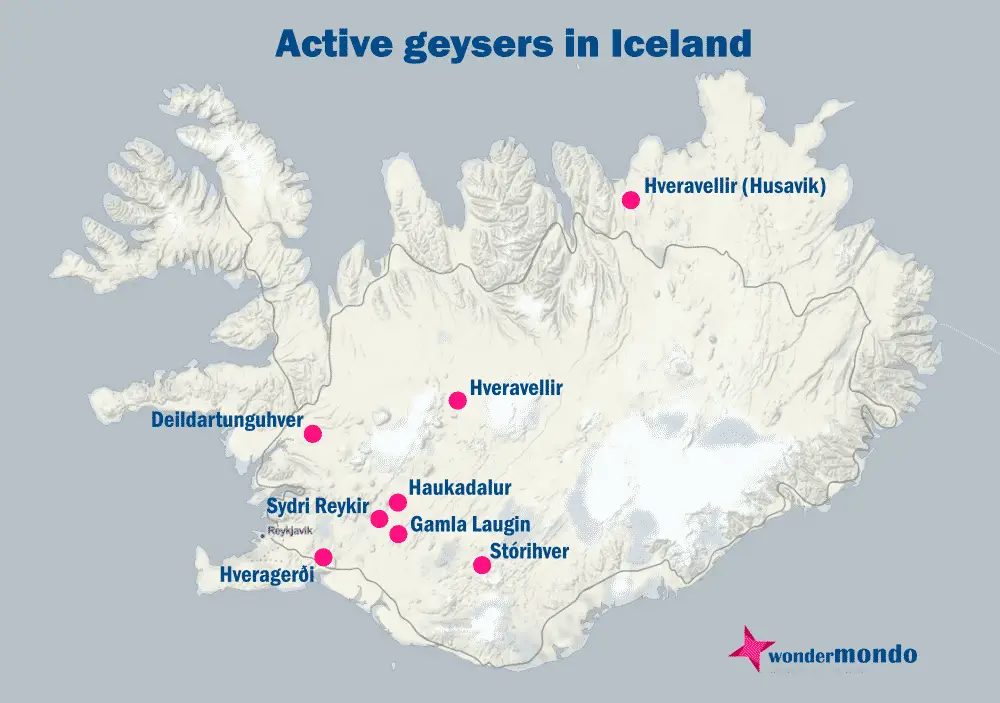Wonder
Ystihver and Hveravellir (Husavik) geothermal field
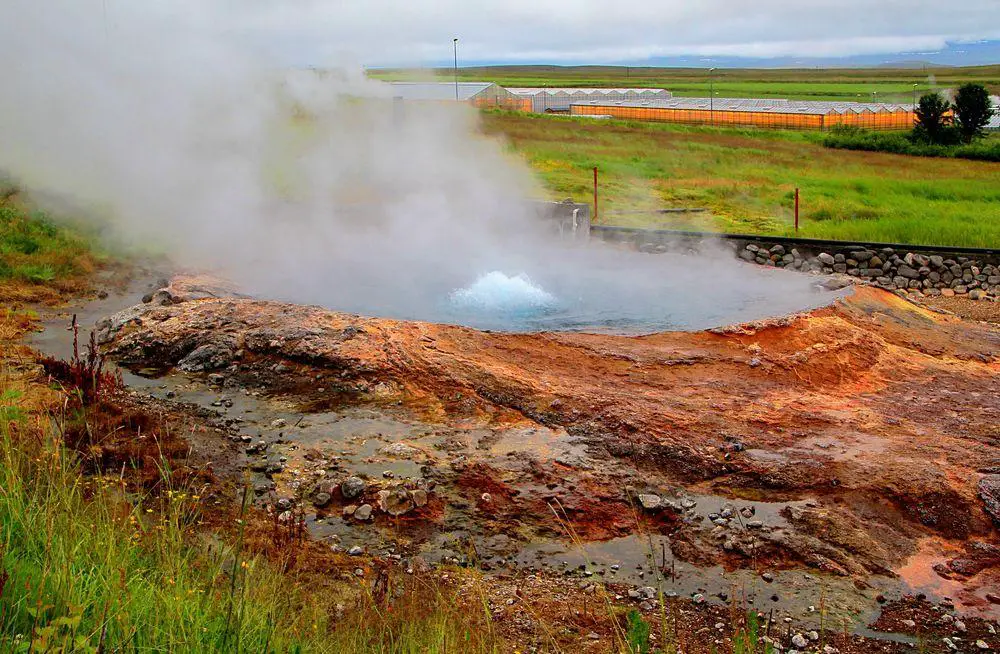
 In short
In short
The northernmost geyser in Iceland and the whole world is Ystihver – the only remaining geyser in Hveravellir geothermal field.
 44.8%
44.8%
GPS coordinates
Alternate names
Height
Map of the site
If you see this after your page is loaded completely, leafletJS files are missing.
 In detail
In detail
Hveravellir geothermal field
There are two Hveravellir geothermal fields in Iceland. The one near Husavik nowadays is somewhat less famous – it has been turned into an energy production facility and much of its former charm has been lost.
Earlier this area was called also Reykir or Storureykir. This was a well know geothermal field, first described already in 1699 – it was on an important road.
The geothermal field is some 1600 by 300 m large and has six larger hot springs – one of them is a geyser and two more – former geysers. In this area are also numerous smaller hot springs.
Initially here developed some farms. In the late 19th century locals tried to grow potatoes – and succeeded. Later local farms started to use hot water for heating houses, then gradually started the development of greenhouses. Now in the geothermal field stand numerous greenhouses, emitting the light throughout the year and producing tomatoes, cucumbers, green peppers, flowers… Locals even built a swimming pool.
In 1970 it was decided to supply the energy of this geothermal field to the nearby city of Husavik, the production of hot water was further increased in 1974. The next extension came in the late 1990ies and as a result, Husavik gets cheap energy. Meanwhile, the hot springs and most of the geysers have been covered with concrete in order to take the energy with possibly low loss. Hveravellir geothermal field has lost most of its former charm.
Ystihver
Ystihver – “northernmost hot spring” is an impressive fountain-type geyser. It has formed a massive sinter cone with a basin that has a diameter of 10 m. This basin is 8 m deep and full of hot, nearly boiling water in a deep blue color.
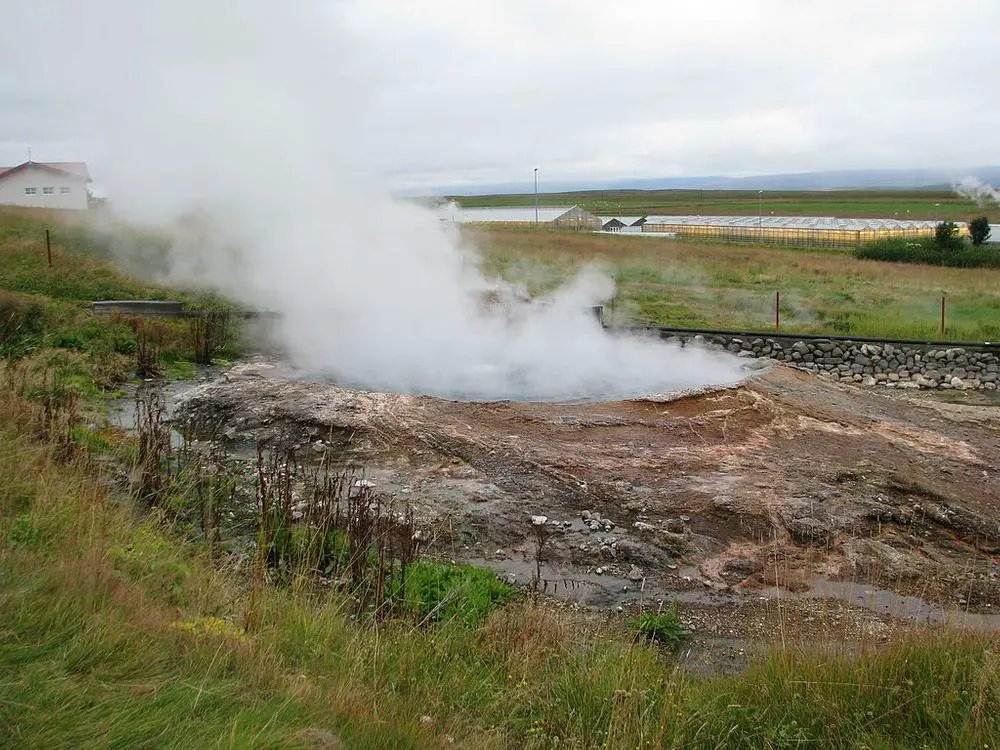
In the 18th – 19th centuries, Ystihver erupted rarely and these eruptions were not too impressive. Then in 1904 it was decided to decrease the water level – in the sinter cone were carved channels and the level in the bowl was decreased by 25 cm.
This did wonders – geyser started to erupt every few minutes up to 12 m high and later – up to 25 m high! Eruptions lasted around 30 – 60 seconds.
In 1970 there was made a borehole nearby and as a result, there are no major eruptions anymore. Now Ystihver has minor eruptions up to 3 m high and smaller splashes every few minutes which are caused by bubbles. With the help of soap though can be “organized” more impressive eruptions reaching up to 10 m high.
Before the drilling, Ystihver produced some 17- 19 l/s but now – some 13 l/s.
Ystihver still is a beautiful natural landmark and the northernmost geyser in Iceland and the whole world.
This video shows an impressive eruption of this geyser.
Other geysers and hot springs
Five other large hot springs are:
- Strokkur – (the churn) is just a few meters from Ystihver. This is a hot spring with some 2 by 3 meters large sinter cone, unfortunately, covered with a concrete cistern.Strútshver – (65.8850 N 17.3155 W) “conical hot spring” is a former hot spring which was located in the Helga river. It had two openings. The larger – northern one is covered with concrete now.
- Syðstihver – (65.8832 N 17.3099 W) “southern hot spring” was a smaller geyser which erupted up to 9 m high and had two openings. This was an interesting sight – the eruptions were from both openings, sometimes – simultaneous. Its output was around 11 l/s, but after the drilling – just 2 – 2.5 l/s. It ceased to erupt after an earthquake in 1872. This geyser also has been covered with concrete.
- Þvottahver – (65.8927 N 17.3127 W) “laundry hot spring” is an intermittent hot spring to the north, at Helga river. This is a circular pool with a temperature of 95 °C and an output of 2 – 3 l/s. In earlier times the farms nearby used it for the laundry and also for district heating. This natural landmark exists up to now.
- Uxahver – (65.8855 N 17.3102 W) “hot spring of ox” – was the most impressive geyser in the group in the 19th century. It had a 2.5 by 3.5 m large sinter cone and it erupted up to 9 m high around 1870. These eruptions came together with a rumbling sound – like a bellow of an ox. In 1872 there was a powerful earthquake that destroyed many houses in this area. For some years the geyser was calm. Around 1900 it started to erupt again – some 2 m high. In 1970 it was covered with a concrete cistern in order to take away the hot water for greenhouses and is not visible or accessible. It is possible that one day if the concrete would be removed, Uxahver would start erupting again.
References
- Dirk Niemann, Hveravellir / Húsavík, Volcanic Springs. Accessed on May 9, 2019. (Great website!)
- Ludvik S. Georgsson, Kristjan Saemundsson, Hreinn Hjartarson, Exploration and Development of the Hveravellir Geothermal Field, N-Iceland, Proceedings World Geothermal Congress 2005, Antalya, Turkey, 24-29 April 2005. Accessed on May 9, 2019.
Hveravellir (Husavik) geothermal field is included in the following article:
 Linked articles
Linked articles
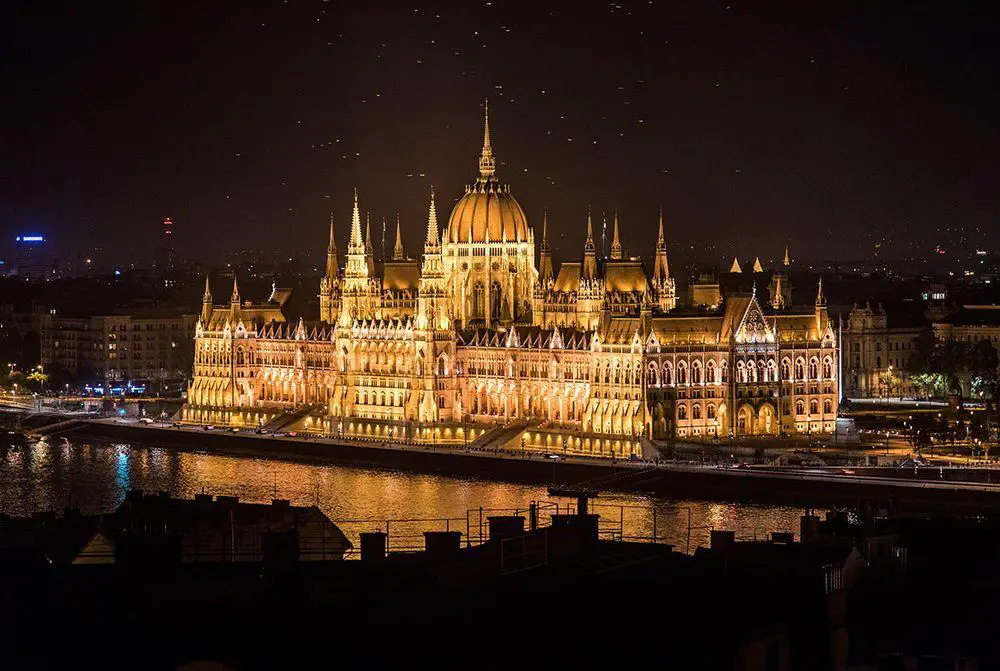
Wonders of Europe
The heritage of Europe is diverse and endlessly interesting. Incomparably rich is the wealth of European historical architecture, but this part of the world has exciting natural heritage and archaeological heritage as well.
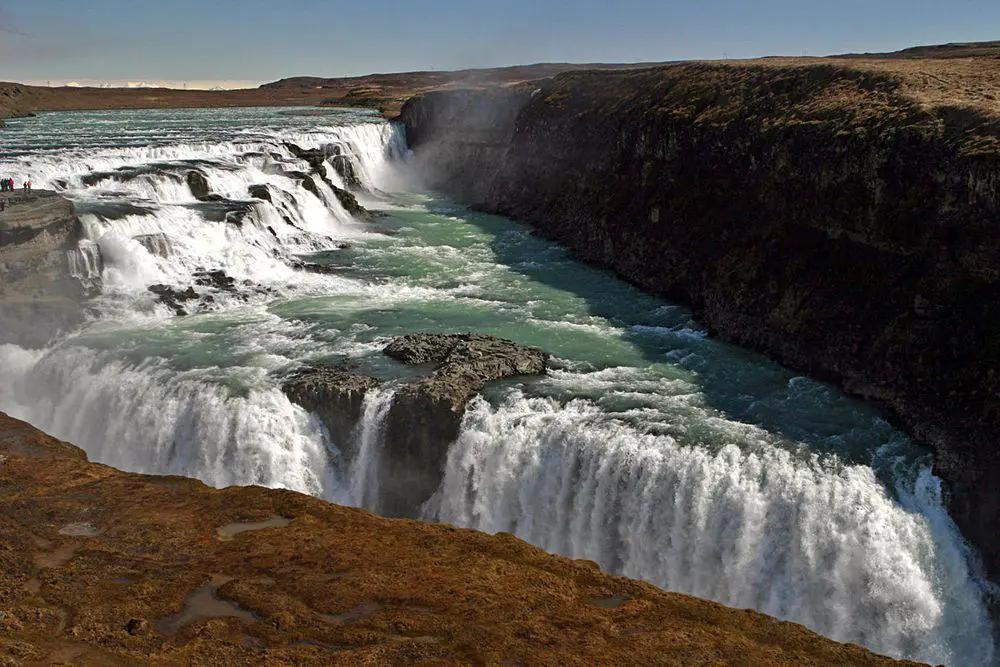
Wonders of Iceland
Iceland is very rich with peculiar natural landmarks and the island contains also interesting cultural landmarks. The highlights of Iceland are the magnificent waterfalls as well as geysers and other geothermal features.
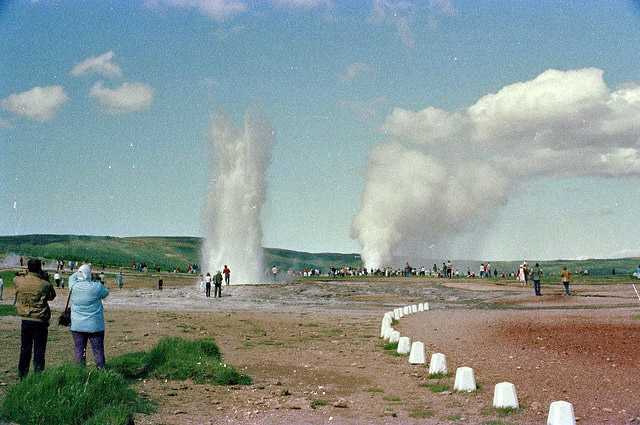
Geysers
Hasty hydrogeologists would say: geysers are thermodynamically and hydrodynamically unstable hot springs. “Normal” people would say – geysers are hot springs that at more or less regular intervals shoot up a fountain of boiling water and steam. Sometimes these fountains are even 100 m tall… or even 450 m!
 Recommended books
Recommended books
Iceland Travel Guide
Iceland Travel Guide Introduction This book includes all the necessary links for an easy journey to your Icelandic adventure. To make your Iceland travel more entertaining and full of all of the things that you want, you’ll see a step-by-step route around the entire country, indicating the distance in miles, accommodations, recreation, entertainment, shopping, and much more. This Iceland travel guide will be the perfect companion to see all of the hottest spots, like Blue Lagoon, Iceland, and other must-sees.
The Glorious Geology of Iceland’s Golden Circle
This is the first book describing the glorious geology of Iceland’s Golden Circle and four additional excursions:(1) the beautiful valleys and mountains of the fjord of Hvalfjördur, (2) the unique landscape and geothermal fields of the Hengill Volcano, (3) the explosion craters, volcanic fissures, and lava fields of the Reykjanes Peninsula, and (4) the volcanoes (Hekla, Eyjafjallajökull, Katla), waterfalls, sandur plains, and rock columns of South Iceland. The Golden Circle offers a unique opportunity to observe and understand many of our planet’s forces in action.

